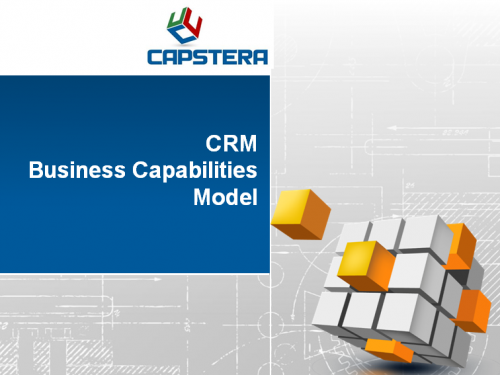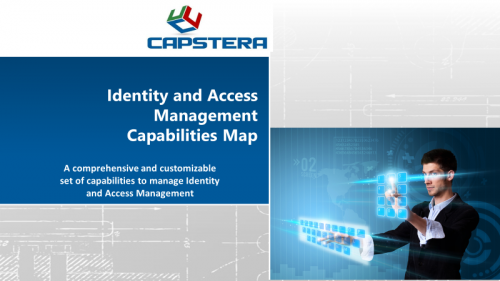Food Services and Restaurants Business Capabilities Map
Price range: U.S. $999 through U.S. $2,999
The Food Services and Restaurants Business Capabilities Map is a customizable, comprehensive, and in-depth set of business capabilities that capture the essence of what a food services and restaurant enterprise does. It will help companies gain a holistic perspective of their business at a foundational level and provide a business blueprint for many valuable purposes.
The Food Services and Restaurants business capabilities map comprises about 350 capabilities across three levels.
Food Services and Restaurants Business Capabilities Map Deliverables:
The Food and Beverage company business capabilities model comprises ~350 capabilities across three levels and includes the following editable artifacts:
- An Excel spreadsheet with the grouping of capabilities.
- A PowerPoint format with the top two levels presented in a nested visualization.
- A Word document with capabilities in a multilevel list format.
- Capability Definitions (at Level 3)
- Capability KPIs (Key Performance Indicators) (at Level 2)
(Note: As the Food Services and Restaurants business capabilities map is a digital deliverable, we do not accept returns or issue refunds. So, please read the product description and the terms carefully before purchasing.)
Watch a Food Services and Restaurant Capabilities Intro Video
The Food service and restaurant company business capabilities map is a set of multilevel and granular business capabilities primarily focusing on the core industry-specific value chain but also decomposes the horizontal shared services.
A capabilities model is a must-have tool for business architects, enterprise architects, business and technology leaders, and project teams to fathom the nuances of the industry’s core, context, and commodity capabilities.
The Strategic Imperative for Food Services and Restaurant Industry Transformation:
The Food Services and Restaurants industry must transform to remain competitive and relevant in an ever-evolving market. There are several strategic reasons for this imperative:
-
Changing Consumer Preferences: With the rise of health-conscious consumers, demand for organic, vegan, and sustainably sourced food options has increased. Adapting to these preferences is essential for attracting and retaining new customers.
-
Technological Advancements: Integrating technology into the dining experience has become a necessity. Digital menus, online reservations, and contactless payments enhance customer convenience, streamline operations, and facilitate data-driven decision-making.
-
Environmental Sustainability: The industry faces increased pressure to minimize its environmental impact through waste reduction, energy-efficient practices, and locally sourced ingredients. Implementing eco-friendly practices is responsible and aligns with consumer values and regulatory requirements.
-
Labor Market Shifts: Labor shortages and high employee turnover are persistent challenges. Embracing automation, investing in training programs, and fostering a supportive work environment can help address staffing issues and improve overall service quality.
-
Increased Competition: The proliferation of delivery services, meal kits, and ghost kitchens has intensified competition. To differentiate themselves, restaurants must enhance their in-person dining experiences while also offering convenient off-premise options.
-
Adaptability to Crises: The COVID-19 pandemic underscored the need for businesses to be nimble in adapting to unforeseen circumstances. Restaurants must develop robust contingency plans and adapt their business models to withstand future disruptions.
The Food Services and Restaurants industry must transform to keep pace with shifting consumer preferences, embrace technology, prioritize sustainability, navigate labor market challenges, differentiate themselves amid increased competition, and develop resilience against future crises.
Business Capabilities are a Cornerstone for Transformation
For Food Services and Restaurants firm to transform successfully, it is essential to establish a structurally strong foundation to support change and innovation over time. This is where business architecture and business capabilities come into play. Business architecture is creating a structured model, including an abstraction of its operations, functions, systems, and resources. This model can help enterprises understand how their business operates, identify inefficiencies, and develop a plan to optimize and streamline operations. In addition, by creating a clear picture of their business architecture, companies can better understand how different business units and functions interact and how changes in one business area can impact other areas.
Business capabilities encapsulate and abstract the functions, skills, and resources a company needs to execute its business strategy successfully. By defining and organizing their business capabilities, companies can identify gaps and redundancies and develop a roadmap to address them. This helps ensure the firm has the necessary resources to execute its strategy and drive innovation over time.
Business architecture and capabilities provide firms with a framework to assess and optimize their operations, reduce costs, and drive innovation. By taking a structured approach to transformation, enterprises can build a foundation capable of supporting ongoing change and adaptation and position themselves for success in a rapidly evolving industry.
(NOTE: The current product provides a comprehensive business capability model. It does not include other business architecture artifacts.)
How to Use the Food Services and Restaurants Business Capabilities Map?
A business capabilities map is a fundamental and foundational deliverable in the business architecture continuum. For example, the food services and restaurants capabilities map encapsulates end-to-end aspects of the business with a detailed, multilevel capabilities list.
There are several benefits from business capabilities, including, among others:
- Foster alignment between business and IT using capabilities as an everyday language.
- Capabilities are a structurally sound and internally coherent abstraction of business functions.
- A capability-based roadmap eliminates redundancy and replication and focuses on capability evolution.
- Juxtaposing capabilities and systems/applications provide a footprint analysis and can lead to better application portfolio rationalization decisions.
The food and beverage industry business capabilities map decomposes components up to three levels. Created by business architects and industry domain experts, the capabilities list is detailed, in-depth, and conforms to the construct of MECE (mutually exclusive and collectively exhaustive).
Who should use the Food Services and Restaurants Business Capabilities Map?
The food services and restaurants business capabilities matrix is a generic model; hence, it is a starting point, not the final product. (Please note that a generic map covering multiple areas will not be specific to your specific company or business model; that is where our professional services can help customize and detail the capability model. Or you can modify and tailor it to your needs internally.) The primary users encompass:
- Business architects and enterprise architects.
- Leaders focused on business transformation.
- Product and program managers enabling capabilities.
The food services and restaurants industry is vast and complex and includes companies specializing in niche areas to global giants spanning every subsector. With modifications and customization, you can use the F&B industry capabilities matrix for the following sectors. Of course, a business capability map is not very useful for mom-and-pop restaurants or small catering businesses. Business capabilities and business architecture matter at a certain scale and size.
- Fast Food Restaurants (Quick Service Restaurants)
- Casual Dining Restaurants
- Fine Dining Restaurants
- Cafés and Coffee Shops
- Food Trucks and Mobile Food Vendors
- Pubs and Bars
- Bakeries and Confectioneries
- Ice Cream and Frozen Yogurt Shops
- Buffets and All-You-Can-Eat Restaurants
- Takeout and Delivery Restaurants
- Ghost Kitchens and Virtual Restaurants
- Catering Services
- Cafeterias and Food Courts
- Theme and Specialty Restaurants
- Ethnic Restaurants (e.g., Chinese, Indian, Italian, Mexican, etc.)
- Health-focused Restaurants (e.g., Vegan, Vegetarian, Organic, etc.)
- Meal Prep and Meal Kit Services
- Pop-Up Restaurants and Temporary Dining Experiences
- Private Chef Services
- Breweries, Wineries, and Distilleries with Tasting Rooms or On-Site Dining
Why Purchase a Business Capabilities Map?
Defining business capabilities from a blank slate takes time and effort and delays time to value. Instead, a pre-built and customizable business capability map helps provide 60-80% of capabilities allowing internal teams to focus on what is missing or unique to their companies.
And the cost is less than an inexpensive team dinner or the loaded cost of 4-5 team members brainstorming for an hour.
And far less than the deliverables consulting firms produce at over $100,000 or more, and compared to that number, the cost of our capabilities models is a fraction (a rounding error.)
Even if you already have a capability map, you could use our version to compare, validate, and potentially include missing capabilities.
A Note About the Artifacts:
- Business Capabilities Matrix: A functional area occupies one box in many business capability maps. Some may wonder why we decomposed the capabilities into 100X or more capabilities. We humbly submit that one box or entry in a one-page diagram is Wall Art, not an implementation tool. Decomposing capabilities into a nested list of granular items will help understand a capability’s depth, breadth, scope, and importance. It is also possible that some capabilities in our matrix may not be relevant to you. Similarly, we may have captured and documented some relevant and essential capabilities of your firm.
- Capability Definitions: We include capability definitions at Level 3. Please feel free to modify it to your company’s needs.
- Capability KPIs (Key Performance Indicators): We added a few KPIs for capabilities (mostly at Level 2) to get you started. You may not measure these KPIs in your company and have an entirely different set of metrics. Again, use them as a springboard, and not debate the applicability to your firm.
Provisos:
- We cannot accept refunds or returns as the products are digital deliverables.
- Please realize that a generic capability model may or may not be entirely applicable in some circumstances.
- We do not offer any implied or explicit warranties, and it is sold on an as-is basis.
- The sale does not include customization or implementation help.
- Please review our standard Ecommerce Store Terms and Conditions.
Need Customization Help?
Food Services and Restaurants Business Capabilities Map
Price range: U.S. $999 through U.S. $2,999





